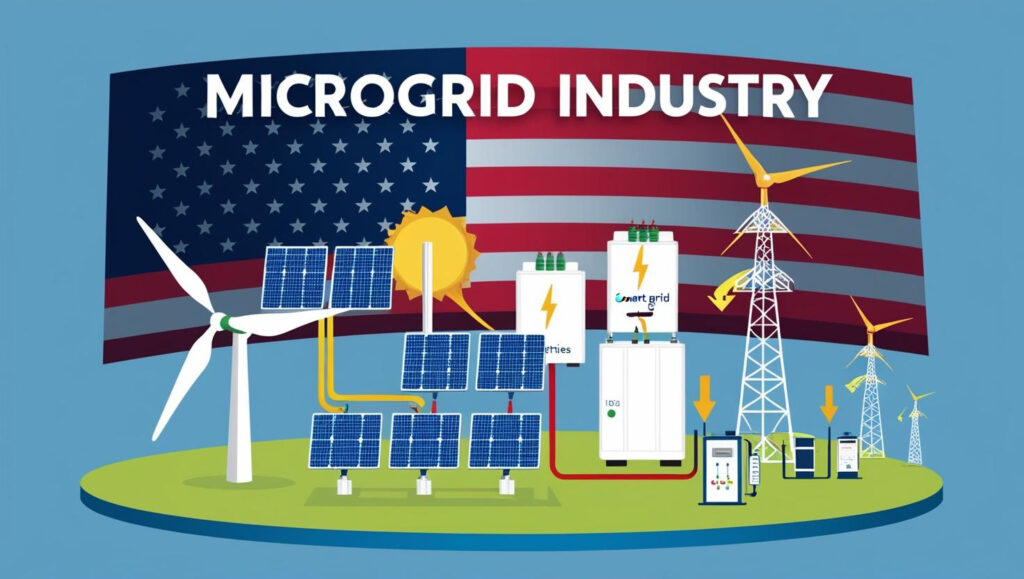The microgrid market known for its resilience, flexibility, and increasing role in modern energy infrastructure, is now navigating the complexities of global trade tensions. As the United States imposes tariffs on imported components particularly from key suppliers like China microgrid developers and operators are experiencing notable disruptions. These trade policies are creating new market dynamics that are both challenging and transformative for the sector’s future growth.
Overview of the Microgrid Market
Microgrids are localized energy systems capable of operating independently or in conjunction with the main grid. They integrate renewable energy sources, energy storage systems, and smart control technologies to enhance energy reliability, reduce emissions, and support decentralized power generation. The U.S. microgrid market has been steadily growing due to rising demand for energy security, grid resiliency, and the integration of renewables. Key end users include commercial and industrial facilities, military installations, campuses, and remote communities.

Book Your “Trump Tariff Threat Assessment”
https://www.marketsandmarkets.com/pdfdownloadNew.asp?id=917
US Trade Policies and Their Immediate Effects
Recent US tariffs on Chinese imports, including batteries, solar panels, and electronic components vital to microgrid construction, have caused a ripple effect across the supply chain. With increased material costs and longer lead times, project developers are facing heightened financial pressures. These tariffs have made it more expensive to build and expand microgrids, prompting delays and revised investment plans across the country.
Moreover, the uncertainty surrounding trade negotiations has made it difficult for stakeholders to plan long-term infrastructure investments. Manufacturers and integrators are now reassessing their sourcing strategies, sometimes switching to alternative suppliers or domestic production—often at a higher cost.
Opportunities and Strategic Shifts
While tariffs pose clear challenges, they also serve as a catalyst for innovation and localization. The push to reduce dependence on foreign components is encouraging investment in domestic manufacturing of energy storage systems, solar panels, and microgrid controllers. This shift could strengthen U.S. supply chains and spur job creation in the clean energy sector.
Additionally, policy-driven incentives like the Inflation Reduction Act (IRA) and the Infrastructure Investment and Jobs Act (IIJA) are helping to offset tariff-related costs. These federal initiatives aim to stimulate clean energy projects and grid modernization, providing financial support that can cushion the tariff impact on microgrid growth.
Long-Term Implications for the Microgrid Industry
In the longer term, U.S. trade policies may lead to a more self-reliant and technologically advanced microgrid market. Companies are being forced to innovate, streamline their supply chains, and diversify their supplier base. However, there is also a risk of slowed market adoption in the short term, especially for smaller players lacking the resources to absorb cost increases or pivot quickly.
To sustain growth, microgrid stakeholders must adopt flexible business models, invest in domestic R&D, and align with government programs designed to boost clean energy infrastructure.